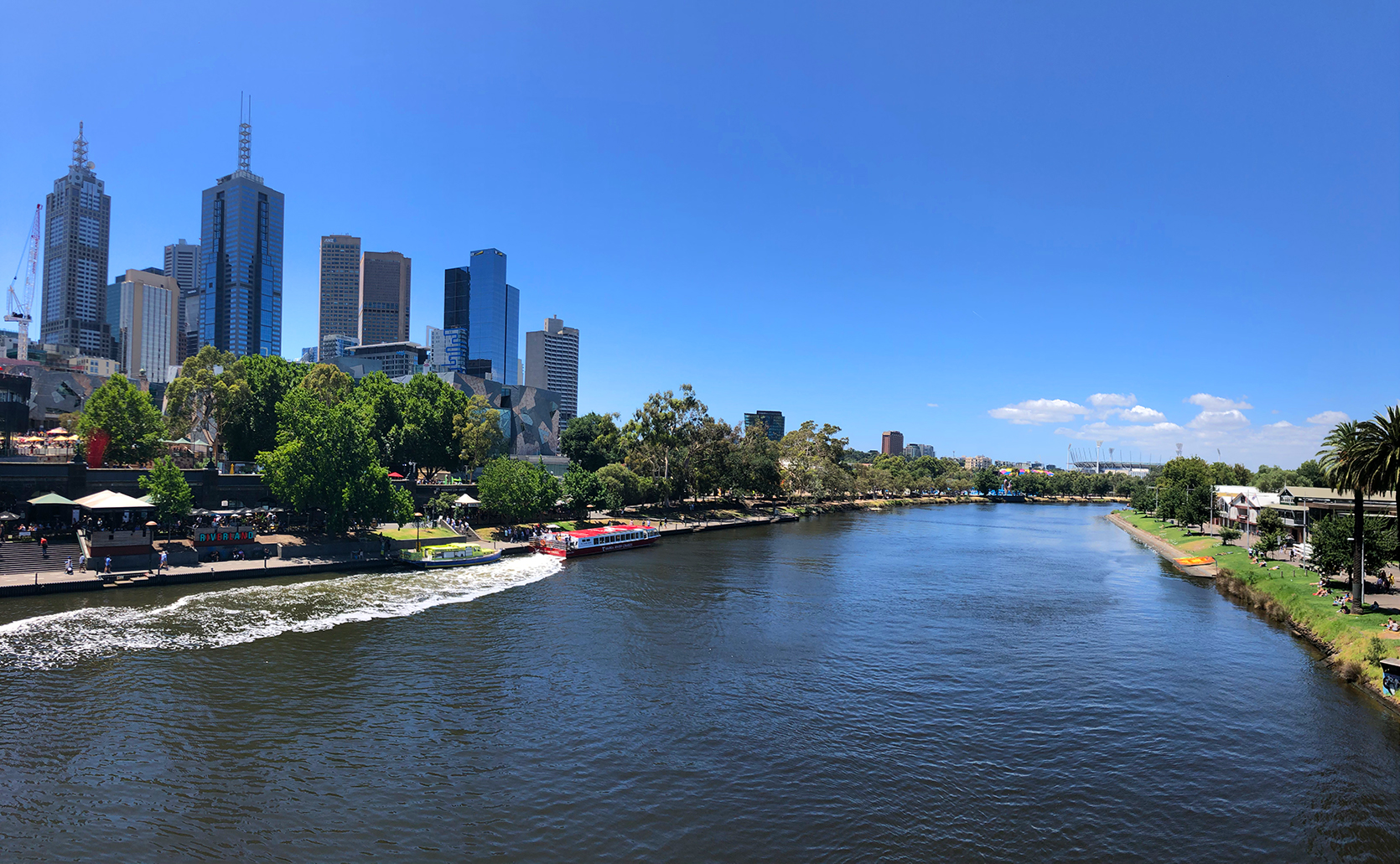Day 6: Osaka Finds Joy Amid Frustration
/There was only one place to be this morning: Margaret Court Arena for Naomi Osaka vs Hsieh Su-Wei, a match I’d had my eye on as soon as the draw came out. When I got there, it was the first time this week that I struggled to find an empty seat in the section reserved for media. After squeezing along the middle row, desperately trying not to knock people’s laptops off their laps, I nestled myself right in amongst the Japanese press pack who had come out in force for Osaka. What followed was an intense experience – it was a brilliant match and I lived every second with the Japanese journalists. Their note-making was much more thorough than mine, but I thought I’d write a little report of my own, which hopefully gives a flavour of the match.
Hsieh Su-Wei and Naomi Osaka
Slow Wi-Fi. Forgetting what you’re about to say. People turning up late when you’re at the cinema. Missing a connecting flight. Constantly getting stopped at red lights. Losing your pen. Brexit. Playing Hsieh Su-Wei at tennis.
That’s a list of frustrating things. The difference with Hsieh Su-Wei, however, is that while she puts her opponents through an ordeal, she provides a whole heap of fun for spectators.
She is no ordinary tennis player. Watching her, you’re forced to question everything you think you know about the sport. Where’s her forehand? Where’s her backhand? Why aren’t opponents just crushing her slow second serve? Is she single-handed or double-handed? She defies categorisation. She just plays.
On Saturday, she had Naomi Osaka under her spell. She was leading 7-5, 4-1. She was playing outlandishly. She was bunting the ball around like only she can, casually but precisely. She was conjuring up shots that existed in her mind and in her mind only, and then bringing them to life. There was one cross-court drop shot, so audacious as a concept, so outstandingly executed, that the umpire seemed to pause before announcing the score. Had she really pulled that off?
She was doing all these “strange things”, as Osaka would put it later, but she was also doing the fundamentals well: putting a lot of balls back into play, moving from side-to-side quickly, not giving Osaka the type of balls that she wanted.
Midway through the second set, it looked almost certain that Osaka would lose. Like many seeds before her, her mind and game had been dismantled by Hsieh. There had been an uncharacteristic chuck of the racquet after losing the opener, and she was so frazzled that she began to moon-ball. As she later admitted, “She (Hsieh) was just playing so well, and I think I got overwhelmed. And then early in the second set I tried doing things that I know isn't necessarily my game, like I was trying to hit higher balls. I don't even practice doing that. So it felt like such a waste.”
Trailing 5-7, 2-4, 0-40, Osaka reverted back to her more natural “grip it and rip it” strategy. Initially it felt almost cruel, a reminder of her potential in the match, that if she could deliver enough arrow-like groundstrokes she had the power to play on her terms and blast through Hsieh. But then she kept it going, and suddenly she had a clear route back into the match. By committing to this approach, she ended up winning 11 of the last 12 games for a 5-7, 6-4, 6-1 victory. It was some turnaround.
A match that at one stage was proving to be a nightmare for Osaka, ended up proving how far she’s come. She had to dig deep, oh so deep. “I’m happy with how I fought”, she commented afterwards. “For me, that’s, like, one of the biggest things I always thought I could improve, because it sort of seems like before I would accept defeat in a way.”
It was a match which required a whole lot of figuring out, and the fact Osaka managed to stay patient will stand her in good stead when she plays Anastasija Sevastova in the next round, a player with similar creative gifts to Hsieh. “I just felt like she was playing too good, and I had to wait,” said Osaka. “For me, it's a bit difficult to do that, because my patience isn't so great on that side, to be honest.”
Even the throw of the racquet signalled a step forward for Osaka. “I would have preferred not to do that, but for me, I tend to keep a lot of things bottled up. I just felt like in that moment sort of releasing it was easier than just keeping it inside, and then maybe I would have dwelled on it for longer.”
But most impressive of all was the way she overcame her frustration and found joy in being on the court against Hsieh. “After a while, I just started thinking that I'm in a Grand Slam. I shouldn't be sad, I'm playing against a really great player, so I should just enjoy my time and try and put all my energy into doing the best that I can on every point.”
For anyone wondering how journalists keep across all the millions of matches at a Grand Slam, the key lies in the most brilliant interactive screen. Every desk in the media centre comes with one. The home page (pictured below) gives full coverage of a court of your choosing, three mini feeds showing the action on other courts, and a grid displaying live scores. There are other options too – press conference feeds, tournament stats, player information, full match replays where you can skip straight to the point you’d like to see. They really are excellent. I’ll be taking mine home.
Without wishing to rub it in, today was just a perfect day, weather wise. David, who’s been coming here for 16 years, says there’s normally a reason to whinge about the weather in Melbourne – too hot, too humid, too windy – but even he couldn’t find fault today. The temperature was in the mid-20s and there was a gentle breeze. On hotter days, not that it’s ever been too bad this year, the event really does do a fine job of helping attendees cope in extreme heat. Every single morning on my way in to Melbourne Park I’ve been offered free water, free ice lollies, and free sun cream. This morning I was even offered a free straw hat, which I politely declined. Once you’re inside the grounds, there are huge fans blasting cold air and water dotted about, and quite a few shady spots.
Another Naomi Osaka press conference, another amusing anecdote. A few minutes into the Japanese portion of the presser, a journalist raised his hand and tried to ask a question in English about her racquet. The moderator intervened, “Sorry, we’ve switched to Japanese questions.” There was a short pause before Osaka chipped in…“I could answer in Japanese if you like?” Perfect comic timing.
The first time I saw Daniil Medvedev play live was against Grigor Dimitrov at Queen’s in 2017, and I remember being stumped as to why he was proving so effective. He had a powerful serve, that much was clear, but his lanky frame and unorthodox forehand didn’t exactly scream world-beater. As he kept winning and his ranking kept rising, I began to realise that he was deceptively good. He would cause his opponents problems without them realising, like when you put your earphones down in a perfectly orderly state, only to pick them up again moments later to find they’ve somehow become a tangled mess. It’s unfathomable how it can happen, but it does. These days, however, Medvedev makes a lot more sense to me. He hits hard, flat and deep. That’s always a useful combination. He completely carved up David Goffin today, and is the next opponent of Novak Djokovic. Given that he only has one career Top 10 victory, facing Djokovic will be a real test of how far he’s come.
MEDIA CENTRE TRIVIA
Yesterday’s question was a toughie - which two female players have the longest gap between winning their first and last Australian Open singles titles?
The answer was Serena Williams (2003-2017) and Nancye Wynne Bolton (1937-1951).
I’d be surprised if anyone got that without cheating!
Today’s question: In 2002, Jennifer Capriati defeated Martina Hingis after fending off how many match points in the Australian Open final?
Please tweet us your replies.










